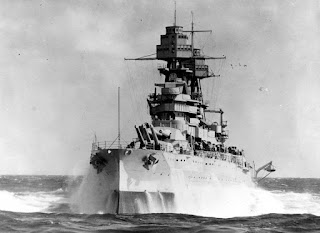Introduction:
The vast expanse of the world's oceans holds countless mysteries, with shipwrecks serving as a tangible link to the past. These sunken vessels, resting silently on the ocean floor, evoke a sense of awe and curiosity. From ancient trade routes to modern naval battles, shipwrecks offer a fascinating glimpse into human history and the perils that have accompanied seafaring adventures. In this article, we embark on an exploration to uncover the magnitude of shipwrecks in the world's oceans, delving into the factors contributing to their proliferation and the efforts made to study and preserve them.
The Enigmatic World of Shipwrecks:
1.1 The Definition and Types of Shipwrecks:
A shipwreck is a term used to describe a ship or boat that has been damaged or destroyed and subsequently lost at sea. These wrecks can vary in size, ranging from small fishing vessels to massive naval warships. They can also be categorized based on historical significance, such as ancient wrecks dating back centuries or more recent wrecks from World War I and II.
1.2 Factors Contributing to Shipwrecks:
Several factors contribute to the occurrence of shipwrecks. Storms and rough weather conditions have claimed numerous vessels throughout history, while navigational errors, human error, and mechanical failures have also played significant roles. Additionally, military conflicts have left countless warships resting at the bottom of the ocean.
Estimating the Number of Shipwrecks:
2.1 Challenges in Determining the Exact Number:
Precisely quantifying the number of shipwrecks in the world's oceans is a daunting task. Many wrecks lie undiscovered, hidden beneath layers of sediment, while others may have deteriorated to the point of being unrecognizable. Additionally, the vastness of the oceans and limited resources for exploration and research present challenges in conducting comprehensive surveys.
2.2 Existing Estimates and Varied Figures:
While an accurate count remains elusive, estimates of the number of shipwrecks vary significantly. The United Nations Educational, Scientific, and Cultural Organization (UNESCO) suggests that there could be over three million shipwrecks worldwide, spanning different historical periods. However, this figure includes wrecks of all sizes, including those in rivers and lakes.
2.3 High-Risk Areas for Shipwrecks:
Certain regions of the world have witnessed a higher concentration of shipwrecks due to historical maritime activity, treacherous waters, or areas of conflict. The North Atlantic, Mediterranean Sea, Caribbean, and the Pacific Islands are among the notable areas known for their extensive shipwreck sites.
Discovering and Studying Shipwrecks:
3.1 Technological Advancements and Exploration:
With advancements in marine technology, underwater archaeologists and explorers have gained better tools to locate and study shipwrecks. Sophisticated sonar systems, remotely operated vehicles (ROVs), and manned submersibles enable researchers to delve deeper into the ocean and access wrecks at great depths.
3.2 Unveiling History and Cultural Significance:
Each shipwreck tells a unique story, offering valuable insights into the past. Archaeologists analyze wrecks to understand historical trade routes, naval battles, cultural practices, and technological advancements of bygone eras. Shipwrecks often serve as time capsules, preserving artifacts, cargo, and even human remains.
Preservation and Protection Efforts:
4.1 Legal Framework for Shipwreck Protection:
International conventions and national laws have been established to protect shipwrecks and ensure their preservation. The United Nations Convention on the Law of the Sea (UNCLOS) provides a legal framework for the protection of underwater cultural heritage, including shipwrecks. It encourages states to preserve and safeguard wrecks of historical, archaeological, or cultural significance.
4.2 Challenges in Preservation:
Preserving shipwrecks is a complex task due to various challenges. Natural processes like corrosion, erosion, and marine organisms can cause significant damage over time. Additionally, illegal activities such as looting and salvaging pose a threat to the integrity of wrecks and the loss of valuable historical artifacts.
4.3 Conservation Initiatives:
Numerous organizations and institutions around the world are dedicated to the conservation and protection of shipwrecks. They collaborate with governments, archaeologists, and local communities to document wrecks, conduct scientific research, and raise awareness about their historical and cultural significance. Conservation efforts often involve site monitoring, stabilization measures, and responsible tourism practices.
Notable Shipwrecks:
5.1 RMS Titanic:
Arguably the most famous shipwreck in history, the RMS Titanic sank in 1912 after colliding with an iceberg. Resting approximately 12,500 feet below the surface of the North Atlantic, the wreck was discovered in 1985. Its tragic story continues to captivate the public imagination and has inspired numerous expeditions and documentaries.
5.2 Mary Rose:
The Mary Rose, a Tudor warship, sank off the coast of England in 1545 during a battle with the French. Rediscovered in 1971 and subsequently salvaged, it provides invaluable insights into naval warfare and daily life during the 16th century.
5.3 USS Arizona:
The USS Arizona is a solemn reminder of the attack on Pearl Harbor in 1941. The battleship rests at the bottom of the harbor in Hawaii and serves as a memorial for the lives lost during the surprise Japanese attack.
Conclusion:
Shipwrecks are poignant reminders of humanity's maritime history, serving as windows into the past. While quantifying the exact number of shipwrecks in the world's oceans remains challenging, estimates suggest a staggering figure, encompassing wrecks from various eras and regions. These underwater time capsules offer archaeologists and researchers invaluable opportunities to understand our past, unravel historical events, and preserve cultural heritage.
With advancements in technology and concerted preservation efforts, we can continue to explore, document, and protect these fragile underwater treasures. By studying shipwrecks, we gain deeper insights into our maritime heritage, appreciate the risks faced by seafarers, and cultivate a greater understanding of the interconnectedness between the ocean and human civilization.
As we continue to unravel the secrets of shipwrecks, it is crucial to strike a balance between exploration and preservation. Through responsible and sustainable practices, we can ensure that these submerged relics remain intact for future generations to explore, learn from, and appreciate, reminding us of the enduring power of the oceans and the indelible imprint of human history they hold.


Comments
Post a Comment
mkhalid@gu.edu.pk